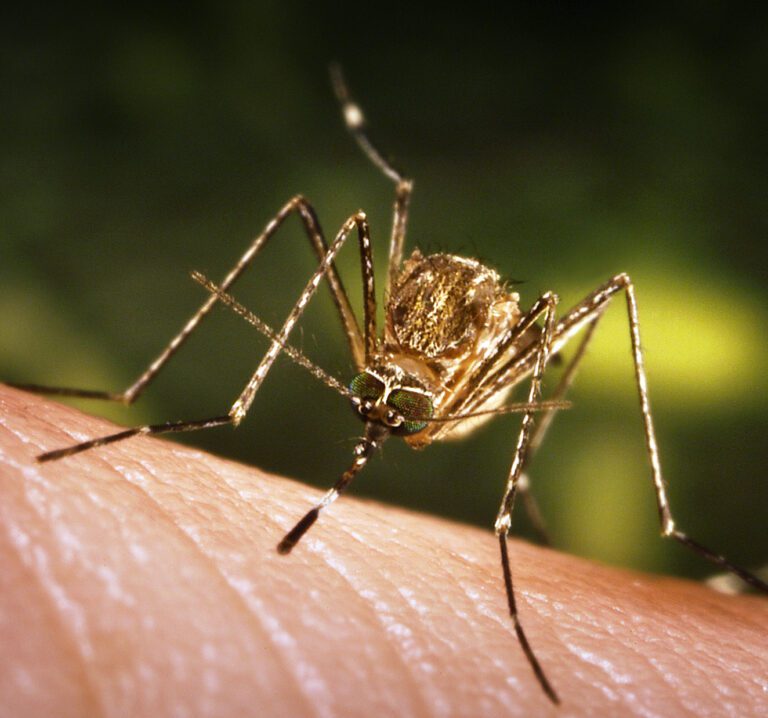Exploring the Impact of Mosquito-Borne Diseases In 2023
In recent years, the United States has experienced an increase in the abundance and distribution of mosquito-borne diseases. The expansion of mosquito habitats, fueled by climate change, urban development, and other human-related factors poses considerable risks to public health. The need for increased vigilance and proactive strategies is clear in the 2023 data reported by the Centers for Disease Control (CDC) and Prevention, which indicates a resurgence of locally acquired malaria, a dramatic increase in West Nile virus cases, and shifts in the distribution of diseases like La Crosse encephalitis, Eastern equine encephalitis, dengue, Jamestown Canyon virus, and St. Louis encephalitis. In our 2023 review, we analyze the details of each disease, including case counts, notable trends, and the potential impact on public health.
*Please note, at the time of publishing this information, mosquito-borne disease-related deaths have not been reported by the CDC.
Malaria
While uncommon in the United States, 9 locally acquired malaria cases were reported across Florida (7 cases), Texas (1 case), and Maryland (1 case) during the summer of 2023. Though believed to be isolated events, the majority of these cases were caused by Plasmodium vivax, a protozoal parasite that infects the blood of its host and causes disease in humans.
Malaria can present with symptoms such as fever, chills, and flu-like illness. Severe cases may result in complications affecting the kidneys, lungs, and blood vessels. It is crucial to note that malaria can affect individuals of all ages, and prompt diagnosis is essential for effective treatment.
Typically, the United States records over 1,000 imported cases of malaria each year and zero locally acquired cases. According to the CDC, locally acquired mosquito-borne malaria has not been reported in the United States since 2003, when 8 cases were identified in Palm Beach County, FL. The main vector for malaria in the Eastern United States is Anopheles quadrimaculatus. The occurrence of 9 locally acquired malaria cases in 2023 serves as a reminder that mosquito dynamics are subject to change, and proactive measures are essential to address potential shifts in disease transmission patterns.

West Nile virus
The frequency of West Nile virus infections reported in 2023 were more than double what we saw in 2022. With torrential rains and flooding across many of the western states a total of 2,406 human disease cases were reported and many of those (n=1,599) experienced the most severe form of infection, including neuroinvasive symptoms. The top 5 states affected by this surge include Colorado (626 cases), California (367 cases), Nebraska (150 cases), Illinois (113 cases), and South Dakota (93 cases). With 47 states reporting cases in 2023, compared to 43 in 2022, the virus continues to pose a widespread threat.
Mosquitoes from the genera Culex are recognized as the primary vectors of the disease worldwide and in the U.S. Among these, Culex pipiens, Culex tarsalis, and Culex quinquefasciatus are the main species responsible for transmitting West Nile virus in the U.S. West Nile virus symptoms range from mild flu-like symptoms to severe neurological conditions. Older adults are particularly vulnerable to severe cases, experiencing complications such as meningitis and brain inflammation.
Year Over Year Change
Top 5 states for Human Case Count:
- Colorado (615)
- California (351)
- Nebraska (150)
- Illinois (113)
- South Dakota (91)

*note: CDC counts District of Columbia as a state
La Crosse Encephalitis
La Crosse encephalitis witnessed an increase in human cases, with 31 reported in 2023, including 30 neuroinvasive cases. Ohio (12 cases), Tennessee (5 cases), and West Virginia (5 cases) led the 10 states that reported cases.
This mosquito-borne disease primarily affects children and can lead to symptoms such as fever, headache, nausea, and, in severe cases, neuroinvasive complications. The transmission of the La Crosse virus occurs through the bite of an infected Aedes triseriatus, commonly known as the Eastern tree-hole mosquito.
Year Over Year Change
Top 3 states for Human Case Count:
- Ohio (12)
- Tennessee (5)
- West Virginia (4)

Eastern Equine Encephalitis
Though there was only 1 case of Eastern Equine Encephalitis in 2022, 7 cases were reported by 4 states in 2023. All cases were neuroinvasive and occurred in the southeast – Alabama (3 cases), Florida (2 cases), Georgia (1 case), and Louisiana (1 case).
While it primarily circulates between birds and the mosquito species Culiseta melanura, transmission to humans and animals can occur through mosquitoes of the Aedes, Coquillettidia, and Culex genera. These mosquitoes feed on infected birds and subsequently bite mammals, spreading the virus.
This disease poses a significant risk, especially among older adults and young children. Symptoms include high fever, headache, and, in severe cases, brain inflammation. The impact on vulnerable populations emphasizes targeted public health campaigns and mosquito control efforts.
Year Over Year Change
Top 4 states for Human Case Count:
- Alabama (3)
- Florida (2)
- Georgia (1)
- Louisiana (1)

Jamestown Canyon Virus
Jamestown Canyon virus experienced a notable increase, with 21 human cases reported in 2023, 15 of which were neuroinvasive. Of the 7 states that reported cases, Wisconsin led with 9 human case counts, followed by Michigan (5 cases), Minnesota (2 cases), New Hampshire (2 cases), Illinois (1 case), New Jersey (1 case), and New York (1 case).
The virus can be spread by different types of mosquitoes, with deer often serving as the amplifying host. Symptoms may include fever, headache, and neurological issues in severe cases. While not often fatal, the virus can cause long-term neurological complications. However, humans are deemed “dead-end” hosts for the virus, as their blood lacks the virus levels necessary to infect mosquitoes and propagate the disease further.
Year Over Year Change
Top 4 states for Human Case Count:
- Wisconsin (9)
- Michigan (5)
- Minnesota (2)
- New Hampshire (2)

St. Louis Encephalitis
St. Louis encephalitis reported 19 cases in 2023 (13 neuroinvasive), a notable decrease from 2022. Of the 3 reporting states, California recorded the highest number (17 cases), followed by South Carolina (1 case) and Washington (1 case).
Culex pipiens, Culex quinquefasciatus, Culex tarsalis, and Culex nigripalpus are the predominant mosquito vectors. Wild birds are amplifying hosts, yet typically remain asymptomatic.
This disease primarily affects older adults and can result in symptoms such as fever, headache, and confusion. The severity of symptoms typically increases with age. Approximately 90% of elderly people who become infected with this virus develop brain inflammation, according to the CDC. The fatality rate for cases ranges between 5% and 20%.
Year Over Year Change
Top 3 states for Human Case Count:
- California (17)
- South Carolina (1)
- Washington (1)

Dengue
Dengue comprises a group of viruses transmitted to humans through infected mosquitoes of the Aedes genus, specifically Aedes aegypti and Aedes albopictus. Though showing a slight overall decrease, Dengue still poses a considerable public health concern with 2,556 reported cases in 2023. More than half of the cases were travel-associated, but 1,104 were locally acquired. Puerto Rico and Florida emerged as the top jurisdictions reporting locally acquired cases.
Dengue symptoms range from mild fever to severe hemorrhagic fever. Severe cases are more common in young children and older adults. Transmission of the disease to a fetus can also occur during pregnancy.
Year Over Year Change
*Red= Locally Acquired Cases, Grey= Travel Related Cases
Top 4 states for Human Case Count:
- Puerto Rico (840)
- Florida (153)
- California (2)
- Texas (1)

Utilizing Data to Drive Informative Mosquito Management Programs
The 2023 data highlights the evolving regional dynamics of mosquito-borne diseases and underscores the importance of tailored, localized efforts to limit the spread. Adult mosquito management, surveillance, disease testing, and public education are pivotal in safeguarding the health of our nationwide communities. Integrated Mosquito Management programs incorporate these key strategies and provide a science-based approach to mosquito control. As we navigate the evolving landscape of mosquito-borne diseases, proactive measures and a collective commitment to public health remain our most impactful tools to combat these growing threats.
Other Noteable Data
- Locally acquired malaria found in U.S. for first time in 20 years (2003, 8 cases in Florida)
- 7 cases in Florida – Plasmodium vivax (P. vivax) – June 26 CDC Health Advisory
- 1 case in Texas – Plasmodium vivax (P. vivax) – June 26 CDC Health Advisory
- 1 case in Maryland – Plasmodium falciparum (P. falciparum) – August 28 CDC Health Advisory
- West Nile virus case count more than doubles from 2022 (105.65% increase)
- La Crosse (31% 🔼) , Eastern Equine (600% 🔼), and Jamestown Canyon (66.66% 🔼) all see human case count increases.
- Dengue human case count decreases slightly (🔽 -7.6%)
VDCI Wants To Make Your Community Safer. How Can We Help?
Speak to an expert about implementing an IMM program.
Fill out the information below, and one of our experts will follow up with you shortly.
Since 1992, Vector Disease Control International (VDCI) has taken pride in providing municipalities, mosquito abatement districts, industrial sites, planned communities, homeowners associations, and golf courses with the tools they need to run effective mosquito control programs. We are determined to protect the public health of the communities in which we operate. Our mosquito control professionals have over 100 years of combined experience in the field of public health, specifically vector disease control. We strive to provide the most effective and scientifically sound mosquito surveillance and control programs possible based on an Integrated Mosquito Management approach recommended by the American Mosquito Control Association (AMCA) and Centers for Disease Control and Prevention (CDC). VDCI is the only company in the country that can manage all aspects of an integrated mosquito management program, from surveillance to disease testing to aerial application in emergency situations.


